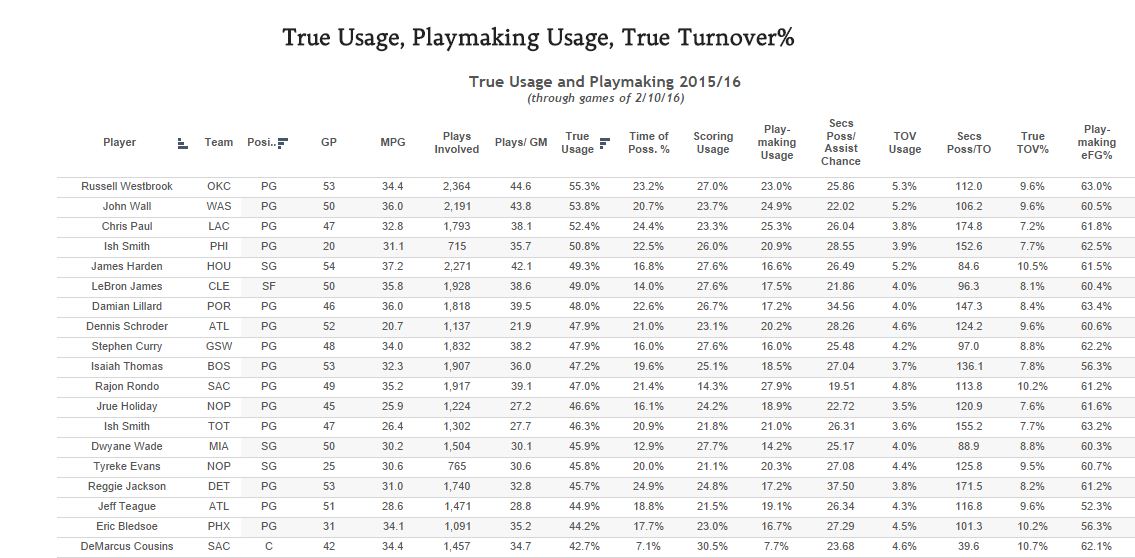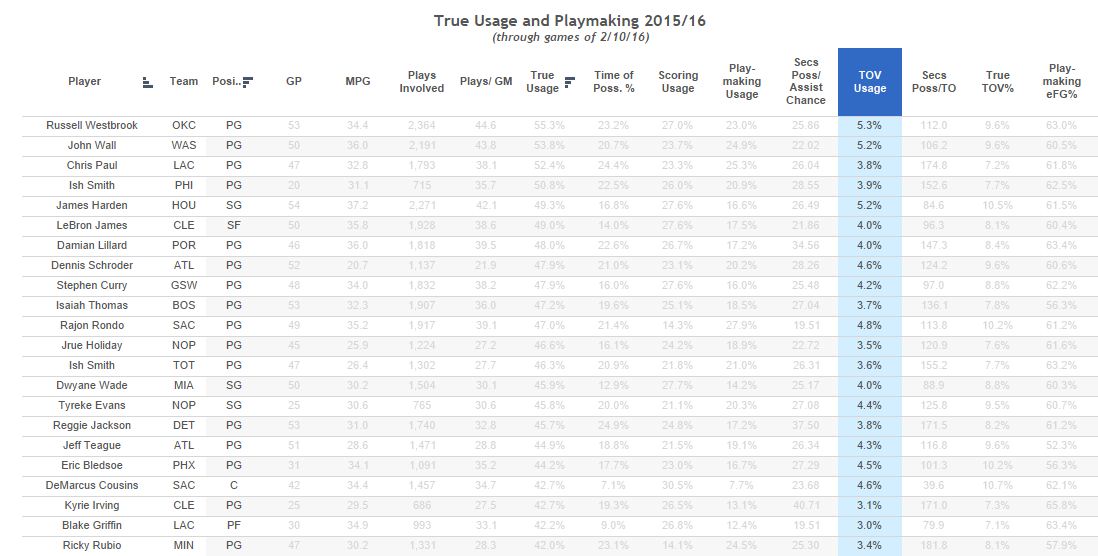The Four Most Misleading NBA Stats: Usage Rate
Let’s first define exactly what usage is as an NBA statistic. Usage rate measures (right now the stats you’ll see on various NBA sites actually approximate this, but that’s not really important for our point) the number of possessions used by a player.
A player can use a possession in three, and only three, ways: a made shot, a missed shot, and a turnover. As you can see, one of those things is positive, while the other two are negative.
Editor’s Note: This is one of the many valuable DFS lessons that can be found over at RotoAcademy. Click here to browse through all of our free/premium offerings and improve as a daily fantasy sports player!
Usage is definitely an important – if not the most important stat for NBA DFS – but you can see how it is inherently flawed. If two-thirds of the statistic are negative by nature, can’t that be incredibly misleading when judging players? For example, a player can “use” a large number of possessions – 30-plus percent – but doing that with a high percentage of made baskets is obviously much different than just turning the ball over on 30-plus percent of your possessions.
This is a huge inefficiency in NBA DFS right now and one that can definitely be exploited if you’re willing to put in the work and research into finding “True Usage” or whatever you want to define it.
The best way to do this is to use NylonCalculus.com. On their site, they break down usage rate into several distinct, and incredibly useful categories: Scoring Usage, Play-making Usage, and Turnover Usage. In NBA DFS, a player can accumulate fantasy points in a variety of ways, be it scoring points, dishing out assists, grabbing rebounds, or however else. Raw usage – the kind you’ll see cited in every NBA DFS article – is very flawed because 2/3’s of it is negative. We don’t want players simply because they have high usage; we want players with high, positive usage.
Here is the top of NylonCalculus’ leaderboard in terms of True Usage:
As you can see, Russell Westbrook leads the NBA in “True Usage,” which incorporates not only his scoring and turnovers (as is the case in raw usage), but also his play-making ability.
Here is the data sorted by turnover usage:
As you can see, you have guys like Dennis Schroder who has a large portion of his usage rate coming from turnovers. Like minutes, usage rates aren’t created equal – would you prefer a guy with a 23% usage rate that is mostly scoring and play-making usage or a guy with a 26% usage rate that is largely turnovers and missed shots? That’s rhetorical – obviously, the former.
Again, this is a huge edge right now in DFS – you can tell this by just looking at the number of sites that either 1) have this data, or 2) even write about it. Right now, it is 1) this article, and 2) NylonCalculus. I think you can probably consider that an edge if you start using the data in your DFS research (think tools like our NBA lineup optimizer).
In Bryan Mears’ The 4 Most Misleading NBA DFS Stats, you’ll learn:
• Why statistics can be misleading
• How minutes aren’t the most important indicator of playing time
• Why usage rate is inherently negative and how to make it positive
• A much better way to interpret Defense versus Position (DvP) data
• How to truly judge offensive players
Want to keep reading? Purchase the course and learn from the best!


